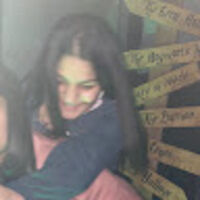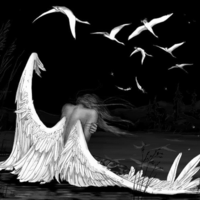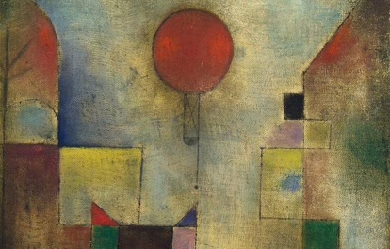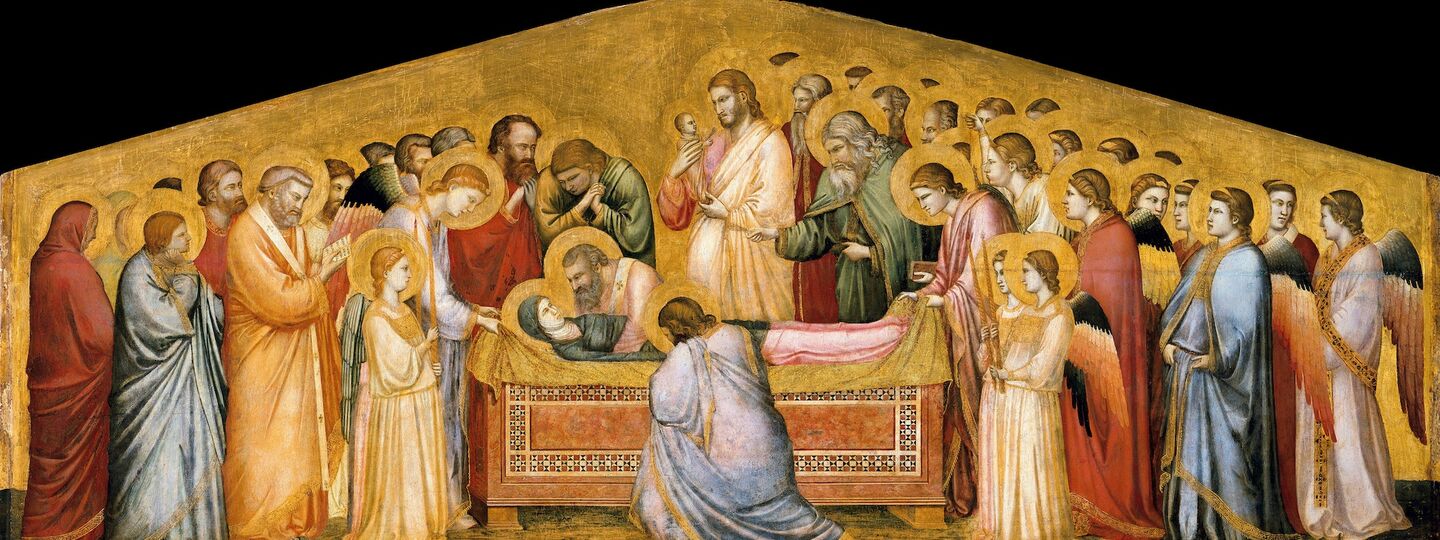
Info
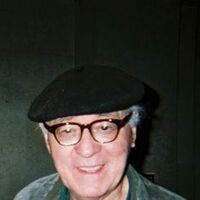
Cid (Sidney) Corman (June 29, 1924 – March 12, 2004) was an American poet, translator and editor, most notably of Origin, who was a key figure in the history of American poetry in the second half of the 20th century. Corman was born in Boston's Roxbury neighborhood and grew up nearby in the Dorchester neighborhood. His parents were both from the Ukraine. From an early age he was an avid reader and showed an aptitude for drawing and calligraphy. He attended Boston Latin School and in 1941 he entered Tufts University, where he achieved Phi Beta Kappa honours and wrote his first poems. He was excused from service in World War II for medical reasons and graduated in 1945. Corman studied for his Master's degree at the University of Michigan, where he won the Hopwood poetry award, but dropped out when two credits short of completion. After a brief stint at the University of North Carolina at Chapel Hill, he spent some time travelling around the United States, returning to Boston in 1948. Here he ran poetry events in public libraries and, with the help of his high-school friend Nat Hentoff, he started the country's first poetry radio program. In 1952, Corman wrote: "I initiated my weekly broadcasts, known as This Is Poetry, from WMEX (1510 kc.) in Boston. The program has been usually a fifteen-minute reading of modern verse on Saturday evenings at seven thirty; however, I have taken some liberties and have read from Moby Dick and from stories by Dylan Thomas, Robert Creeley, and Joyce."[3] This program featured readings by Robert Creeley, Stephen Spender, Theodore Roethke and many other Boston-based and visiting poets. He also spent some time at the Yaddo artists' retreat in Saratoga Springs. It was about this time that Corman changed his name from Sydney Corman to the simpler "Cid." As Corman indicated in conversation, this name change--similar to Whitman's assumption of Walt over Walter--signaled his beginnings as a poet for the common man. During this period, Corman was writing prolifically and published in excess of 500 poems in about 100 magazines by 1954. He considered this to be a kind of apprenticeship, and none of these poems were ever published in book form. Origin and Europe In 1951, Corman began Origin in response to the failure of a magazine that Creeley had planned. The magazine typically featured one writer per issue and ran, with breaks, until the mid 1980s. Poets featured included Robert Creeley, Robert Duncan, Larry Eigner, Denise Levertov, William Bronk, Theodore Enslin, Charles Olson, Louis Zukofsky, Gary Snyder, Lorine Niedecker, Wallace Stevens, William Carlos Williams, Paul Blackburn and Frank Samperi. The magazine also led to the establishment of Origin Press, which published books by a similar range of poets as well as by Corman himself and which remains currently active. In 1954, Corman won a Fulbright Fellowship grant (with an endorsement from Marianne Moore) and moved to France, where he studied for a time at the Sorbonne. He then moved to Italy to teach English in a small town called Matera. By this time, Corman had published a number of small books, but his Italian experiences were to provide the materials for his first major work, Sun Rock Man (1962). He also experimented with oral poetry, recording improvised poems on tape. These tapes were later to influence the talk-poems of David Antin, one of the key developments in the emergence of performance poetry. At this time he produced the first English translations of Paul Celan, even though he didn't have the poet's approval. Japan In 1958, Corman got a teaching job in Kyoto through the auspices of Will Petersen or, according to one account, poet Gary Snyder. Here he continued to write and to run Origin and in 1959 he published Snyder's first book, Riprap. He remained in Japan until 1960, when he returned to the States for two years. Back in Japan he married Konishi Shizumi, a Japanese TV news editor. Corman began to translate Japanese poetry, particularly work by Bashō and Kusano Shimpei. The Cormans spent the years 1970 to 1982 in Boston, where they unsuccessfully tried to establish a number of small businesses. They returned to Kyoto, where they remained, running CC's Coffee Shop in Kyoto, "offering poetry and western-style patisserie". Later work Corman has been associated with the Beats, Black Mountain poets and Objectivists, mainly through his championing as an editor, publisher and critic. However, he remained independent of all groups and fashions throughout his career. Michael Carlson, who contributed to Origins and corresponded with Corman starting in the 1980s, described Corman's correspondence this way: "In the days before email his words came by return post, aerogrammes densely typed to take advantage of every inch of space, or postcards printed in his fine hand. They were encouraging, gossipy, and always challenging; he expected everyone to match his commitment to poetry as a way of life. But they also digressed into other shared enthusiasms: in my case his love of baseball and sumo wrestling, and often into the difficulties of making a living in expensive Japan." He was a prolific poet until his final illness, publishing more than 100 books and pamphlets. In 1990, he published the first two volumes of his selected poems, OF, running to some 1500 poems. Volume 3, with a further 750 poems appeared in 1998 and two further volumes are planned. Several collections of wide-ranging essays have been published. His translations (or co-translations) include Bashō's Back Roads to Far Towns, Things by Francis Ponge, poems by Paul Celan and collections of haiku. Cid Corman did not speak, read or write Japanese, even though his co-translation with Susumu Kamaike of Bashō's Oku No Hosomichi (see above) is considered to be one of the most accurate in tone in the English language. Corman also felt himself able to translate from classical Chinese without so much as a minimal understanding of the language. One of Corman's last appearances in the United States was at the 2003 centennial symposium and celebration in southern Wisconsin that honored his friend and fellow poet, Lorine Niedecker. At the time, Corman spoke warmly about his connection to the Fort Atkinson, Wisconsin, poet (playing the only known audio tape of Niedecker reading from her works). Niedecker had died in 1970, shortly after Corman had visited her. As he told friends and admirers during the 2003 gathering, Corman had not returned to the Black Hawk Island haunts of Niedecker since that first (and only) visit with Niedecker. He died in Kyoto, Japan on March 12, 2004 after being hospitalized for a cardiac condition since January 2004. References Wikipedia - http://en.wikipedia.org/wiki/Cid_Corman
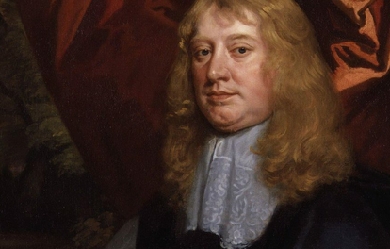
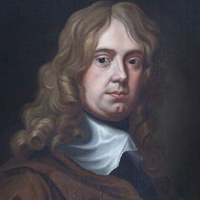
Abraham Cowley (1618– 28 July 1667) was an English poet born in the City of London late in 1618. He was one of the leading English poets of the 17th century, with 14 printings of his Works published between 1668 and 1721. Early life and career His father, a wealthy citizen, who died shortly before his birth, was a stationer. His mother was wholly given to works of devotion, but it happened that there lay in her parlour a copy of The Faerie Queene. This became the favourite reading of her son, and he had read it twice before he was sent to school. As early as 1628, that is, in his tenth year, he composed his Tragicall History of Piramus and Thisbe, an epic romance written in a six-line stanza, a style of his own invention. It is not too much to say that this work is the most astonishing feat of imaginative precocity on record; it is marked by no great faults of immaturity, and possesses constructive merits of a very high order. Two years later the child wrote another and still more ambitious poem, Constantia and Philetus, being sent about the same time to Westminster School. Here he displayed extraordinary mental precocity and versatility, and wrote in his thirteenth year the Elegy on the Death of Dudley, Lord Carlton. These three poems of considerable size, and some smaller ones, were collected in 1633, and published in a volume entitled Poetical Blossoms, dedicated to the head master of the school, and prefaced by many laudatory verses by schoolfellows. The author at once became famous, although he had not, even yet, completed his fifteenth year. His next composition was a pastoral comedy, entitled Love’s Riddle, a marvelous production for a boy of sixteen, airy, correct and harmonious in language, and rapid in movement. The style is not without resemblance to that of Randolph, whose earliest works, however, were at that time only just printed. In 1637 Cowley was elected into Trinity College, Cambridge, where he betook himself with enthusiasm to the study of all kinds of learning, and early distinguished himself as a ripe scholar. Portraits of Cowley, attributed to William Faithorne and Stephen Slaughter, are in Trinity College’s collection. It was about this time that he composed his scriptural epic on the history of King David, one book of which still exists in the Latin original, the rest being superseded in favour of an English version in four books, called the Davideis, which were published after his death. The epic deals with the adventures of King David from his boyhood to the smiting of Amalek by Saul, where it abruptly closes. In 1638 Love’s Riddle and a Latin comedy, the Naufragium Joculare, were printed, and in 1641 the passage of Prince Charles through Cambridge gave occasion to the production of another dramatic work, The Guardian, which was acted before the royal visitor with much success. During the civil war this play was privately performed at Dublin, but it was not printed till 1650. It is bright and amusing, in the style common to the “sons” of Ben Jonson, the university wits who wrote more for the closet than the public stage. Royalist in exile The learned quiet of the young poet’s life was broken up by the Civil War; he warmly espoused the royalist side. He became a fellow of Trinity College, Cambridge, but was ejected by the Parliamentarians in 1643. He made his way to Oxford, where he enjoyed the friendship of Lord Falkland, and was tossed, in the tumult of affairs, into the personal confidence of the royal family itself. After the battle of Marston Moor he followed the queen to Paris, and the exile so commenced lasted twelve years. This period was spent almost entirely in the royal service, “bearing a share in the distresses of the royal family, or labouring in their affairs. To this purpose he performed several dangerous journeys into Jersey, Scotland, Flanders, the Netherlands, or wherever else the king’s troubles required his attendance. But the chief testimony of his fidelity was the laborious service he underwent in maintaining the constant correspondence between the late king and the queen his wife. In that weighty trust he behaved himself with indefatigable integrity and unsuspected secrecy; for he ciphered and deciphered with his own hand the greatest part of all the letters that passed between their majesties, and managed a vast intelligence in many other parts, which for some years together took up all his days, and two or three nights every week.” In spite of these labours he did not refrain from literary industry. During his exile he met with the works of Pindar, and determined to reproduce their lofty lyric passion in English. However, Cowley misunderstood Pindar’s metrical practice and therefore his reproduction of the Pindaric Ode form in English does not accurately reflect Pindar’s poetics. But despite this problem, Cowley’s use of iambic lines of irregular length, pattern, and rhyme scheme was very influential and is still known as English “Pindarick” Ode, or Irregular Ode. One of the most famous odes written after Cowley in the Pindaric tradition is Wordsworth’s “Intimations of Immortality.” During this same time, Cowley occupied himself in writing a history of the Civil War (which did not get published in full until 1973). In the preface to his 1656 Poems, Cowley mentioned that he had completed three books of an epic poem on the Civil War, but had left it unfinished after the First Battle of Newbury when the Royalist cause began to lose significant ground. In the preface Cowley indicated that he had destroyed all copies of the poem, but this was not precisely the truth. In 1697, twelve years after Cowley’s death, a shortened version of the first book of the poem, called A Poem on the Late Civil War was published. It was assumed that the rest of the poem had indeed been destroyed or lost until the mid-20th century when scholar Allan Pritchard discovered the first of two extant manuscript copies of the whole poem among the Cowper family papers. Thus, the three completed books of Cowley’s great (albeit unfinished) English epic, The Civill Warre (otherwise spelled “The Civil War”), was finally published in full for the first time in 1973. In 1647 a collection of his love verses, entitled The Mistress, was published, and in the next year a volume of wretched satires, The Four Ages of England, was brought out under his name, with the composition of which he had nothing to do. In spite of the troubles of the times, so fatal to poetic fame, his reputation steadily increased, and when, on his return to England in 1656, he published a volume of his collected poetical works, he found himself without a rival in public esteem. This volume included the later works already mentioned, the Pindarique Odes, the Davideis, the Mistress and some Miscellanies. Among the latter are to be found Cowley’s most vital pieces. This section of his works opens with the famous aspiration: “What shall I do to be for ever known, And make the coming age my own?” It contains elegies on Wotton, Vandyck, Falkland, William Hervey and Crashaw, the last two being among Cowley’s finest poems, brilliant, sonorous and original; the amusing ballad of The Chronicle, giving a fictitious catalogue of his supposed amours; various gnomic pieces; and some charming paraphrases from Anacreon. The Pindarique Odes contain weighty Lines and passages, buried in irregular and inharmonious masses of moral verbiage. Not more than one or two are good throughout, but a full posy of beauties may easily be culled from them. The long cadences of the Alexandrines with which most of the strophes close, continued to echo in English poetry from Dryden down to Gray, but the Odes themselves, which were found to be obscure by the poet’s contemporaries, immediately fell into disesteem. The Mistress was the most popular poetic reading of the age, and is now the least read of all Cowley’s works. It was the last and most violent expression of the amatory affectation of the 17th century, an affectation which had been endurable in Donne and other early writers because it had been the vehicle of sincere emotion, but was unendurable in Cowley because in him it represented nothing but a perfunctory exercise, a mere exhibition of literary calisthenics. He appears to have been of a cold, or at least of a timid, disposition; in the face of these elaborately erotic volumes, we are told that to the end of his days he never summoned up courage to speak of love to a single woman in real life. The “Leonora” of The Chronicle is said to have been the only woman he ever loved, and she married the brother of his biographer, Sprat. Return to England Soon after his return to England he was seized in mistake for another person, and only obtained his liberty on a bail of £1000. In 1658 he revised and altered his play of The Guardian, and prepared it for the press under the title of The Cutter of Coleman Street, but it did not appear until 1661. Late in 1658 Oliver Cromwell died, and Cowley took advantage of the confusion of affairs to escape to Paris, where he remained until the Restoration brought him back in Charles’s train. He published in 1663 Verses upon several occasions, in which The Complaint is included. He is also known for having provided the earliest reference to coca in English literature, in a poem called “A legend of coca” in his 1662 collection of poems Six Books of Plants. Cowley obtained permission to retire into the country; and through his friend, Lord St Albans, he obtained a property near Chertsey, where, devoting himself to botany and books, he lived in comparative solitude until his death. He took a practical interest in experimental science, and he was one of those advocating the foundation of an academy for the protection of scientific enterprise. Cowley’s pamphlet on The Advancement of Experimental Philosophy, 1661, immediately preceded the foundation of the Royal Society; to which Cowley, in March 1667, at the suggestion of John Evelyn, addressed an ode. He died in the Porch House, in Chertsey, in consequence of having caught a cold while superintending his farm-labourers in the meadows late on a summer evening. On 3 August, Cowley was buried in Westminster Abbey beside the ashes of Chaucer and Spenser, where in 1675 the duke of Buckingham erected a monument to his memory. His Poemata Latina, including six books “Plantarum,” were printed in 1668. The poetry of Cowley rapidly fell into neglect. The works of Cowley were collected in 1668, when Thomas Sprat brought out an edition in folio, to which he prefixed a life of the poet. There were many reprints of this collection, which formed the standard edition till 1881, when it was superseded by Alexander Balloch Grosart’s privately printed edition in two volumes, for the Chertsey Worthies library. The Essays have frequently been revived. A Satire Against Separatists, printed in 1675, has been variously attributed to Cowley and to Peter Hausted. References Wikipedia—https://en.wikipedia.org/wiki/Abraham_Cowley

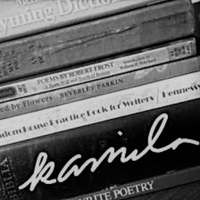
Just writing and trying to see if I am a 'scientist' indeed--while greeting you from Manila. :) "We are the scientists trying to make sense of the stars inside us." (Christopher Poindexter) Copyright Notice Kamila More Cabisada and Writing Art, 2016-2017. Unauthorized use and/or duplication of material personally written by Kamila More Cabisada without express and written permission from the author is strictly prohibited. Excerpts and links may be used, provided that full and clear credit is given to Kamila More Cabisada with appropriate and specific direction to the original content. (kamilawriting.wordpress.com)
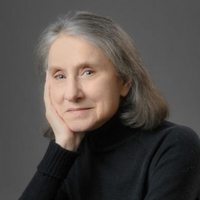
Maryann Corbett (née Zillotti, Washington, D.C.) is an American poet, medievalist, and linguist.She grew up in northern Virginia. She did her undergraduate work at the College of William and Mary in Williamsburg, Virginia, and graduated with a doctorate in English from the University of Minnesota.Her work has appeared in Southwest Review, Barrow Street, Rattle, River Styx, Atlanta Review, The Evansville Review, Measure, Literary Imagination, The Dark Horse, Italian Americana, Mezzo Cammin, Linebreak, Subtropics, Verse Daily, American Life in Poetry, The Poetry Foundation, The Writer’s Almanac, and many other venues in print and online, as well as an assortment of anthologies, including The Best American Poetry 2018. She has been a several-time Pushcart and Best of the Net nominee; a finalist for the 2009 Morton Marr Prize, the 2010 Best of the Net anthology, and the 2011 and 2016 Able Muse Book Prize; and a winner of the Lyric Memorial Award, the Willis Barnstone Translation Prize, and the Richard Wilbur Award. Her third book, Mid Evil, is the Wilbur Award winner and has been published by the University of Evansville Press.She has worked as a writing teacher and indexer for the Minnesota Legislature. She lives in St. Paul, Minnesota.
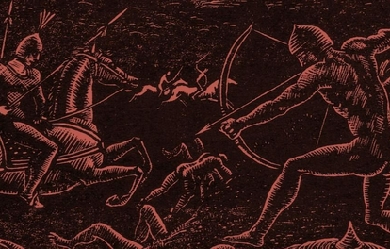
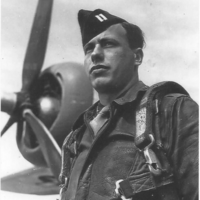
Ralph Nicholas Chubb (8 February 1892– 14 January 1960) was an English poet, printer, and artist. Heavily influenced by Whitman, Blake, and the Romantics, his work was the creation of a highly intricate personal mythology, one that was anti-materialist and sexually revolutionary. Life Ralph Chubb was born in Harpenden, Hertfordshire. His family moved to the historic town of St Albans before his first birthday. Chubb attended St Albans School and Selwyn College, Cambridge before becoming an officer in the First World War. He served with distinction but developed neurasthenia, and he was invalided out in 1918. From 1919 to 1922 Chubb studied at the Slade School of Art in London. It was there that he met Leon Underwood and other influential artists. He went on to contribute several articles and poems for Underwood’s magazine, The Island. Although his work was displayed at such venues as the Goupil Gallery and the Royal Academy of Art, his paintings did not sell. There are several in public collections in Britain. His major painting The Well (1920) is in Wakefield; Southampton has bathers with boys wrestling, and there are nudes at Leamington, all illustrated in the Public Art Foundation catalogues. He moved with his family to the village of Curridge, near Newbury in Berkshire. He began to devote his artistic talents to the printed works which would remain his chief labour in life. His books were created in several chief phases. His typeset books of the twenties were a humble offering, exhibiting Chubb’s talent for woodcutting and his quaint, visually inspired poetry. Even at this early stage, Chubb’s lifelong obsession with adolescent males was beginning to become apparent. He expands upon this theme more explicitly in An Appendix, a pederastic and spiritualist manifesto duplicated from a cursive manuscript. An Appendix was the first of his printed works to be printed in his own hand; he soon followed this with the first of his opulent lithographic books, The Sun Spirit. Throughout the nineteen-thirties, Chubb’s books became more elaborate and appealing. Water Cherubs crystallizes Chubb’s aesthetic of the youthful male form, and The Secret Country unfolds like an illuminated manuscript, recounting stories of Chubb’s family and his journeys among the Romani of the New Forest in Hampshire. Chubb’s printing press was interrupted by the war, but in 1948 he entered into the third period of career with two massive volumes: The Child Of Dawn and Flames of Sunrise. Each page of these two volumes is crowded with obscure digressions on Chubb’s mythology and drawings of symbolic significance. Briefly summarized, Chubb’s vision was a prophecy of the redemption of 'Albion’, or England, by the boy-god Ra-el-phaos, of whom Ralph claimed himself to be the prophet and herald. This echoes an earlier announcement to be found in The Heavenly Cupid: I announce a secret event as tremendous and mysterious as any that has occurred in the spiritual history of the world. I announce the inauguration of a Third Dispensation, the dispensation of the Holy Ghost on earth, and the visible advent thereof on earth in the form of a Young Boy of thirteen years old, naked perfect and unblemished. Other themes run through all of Chubb’s work. He was forever haunted by the memory of a young chorister at St Albans who disappeared from Chubb’s life just as he had summoned up the courage to speak to him. Similarly, a brief sexual relationship with another boy when Ralph was 19 seemed to serve as a template for future visions of paradise. Chubb’s books become progressively more self-involved and paranoid. Seeking to articulate his pederastic desires, he created a personal mythology which explained everything in terms only he could understand. Nonetheless, Chubb’s work is of fascinating psychological significance; each of the various angels, knights, seers, and boy-gods in his dream world represents an aspect of his introspective and persecuted self. Chubb, like many other artists of his generation, resented science for its intrusion into his imagination. He disparaged the scientists, orthodox theologians, and politicians of world, accusing them of squelching his personal thirst for liberty. In 1927 he wrote: Existence, besides being a miracle, is a symbol. Albeit here for inscrutable purposes the spirit is only to be discerned as it were in a distorting-glass. (The Book of God’s Madness) Chubb sought to persuade his readers in An Appendix of the verity of his solipsism by illustrating some examples of serendipitous events from his life. His aim is more on the mark when he excoriates the taboos and frustrations of modern life. The green green hills, the blue blue sky, blue sea, great golden SUN, yellow dandelions, the pink naked beauty of ripe boyhood, deathless free and happy, brimming with health. This I must have. Nothing less than this can ever satisfy me! GIVE ME MY HEAVEN! GIVE ME MY HEAVEN! (Water-Cherubs) Failing in health and facing continuing legal and financial difficulties, Ralph Chubb abandoned his controversial works in the mid-fifties, and began to collect and reprint his early poems and childhood memories. Treasure Trove and The Golden City (published posthumously) are devoid of the usual profusion of naked, lissome youths, but instead offer a glimpse into his youthful imagination, and some of his most charming poetry. In the final years of his life he donated his remaining volumes to the national libraries of Britain. He died peacefully at Fair Oak Cottage in Hampshire and was buried next to his parents at the Kingsclere Woodland Church. Chubb’s own assessment of his work conforms to the general critical reaction: I do not necessarily claim to be a great artist or writer; but I claim to be a true spirit– this is a subtler test. Seek me out; but you may not find me. (An Appendix) Works * None of the editions of Chubb’s books exceed more than 200 copies, and some of his lithographed masterworks exist in only 30 or 40 copies, of which a mere 6 or 7 are meticulously hand-colored by Chubb. * The dates and titles of Chubb’s printed works are given below. Early typeset works * 1924 Manhood * 1924 The Sacrifice of Youth * 1925 A Fable of Love & War * 1927 The Cloud & the Voice * 1928 Woodcuts * 1928 The Book of God’s Madness * 1929 An Appendix (duplicated hand-written text) Lithographed texts * 1930 Songs of Mankind * 1931 The Sun Spirit * 1934 The Heavenly Cupid * 1935 Songs Pastoral and Paradisal (illustrated by Vincent Stuart; script by Helen Hinkley) * 1936 Water Cherubs * 1939 The Secret Country Post-war prophetic texts * 1948 The Child of Dawn * 1953 Flames of Sunrise Juvenalia and early romances * 1957 Treasure Trove * 1960 The Golden City Posthumous works * 1965 The Day of St Alban * 1970 Autumn Leaves References and further reading * Cave, Roderick (1960). In Blake’s Tradition: the Press of Ralph Chubb. The American Book Collector. 11 (2), p8-17 * Cave, Roderick (1960). 'Blake’s Mantle’, a Memoir of Ralph Chubb. Book Design and Production. 3 (2), p24-8 * D’Arch Smith, Timothy (1970). Love in Earnest. London: Routledge & Kegan Paul. * Rahman, Tariq (1991). Ephebophilia and the Creation of a Spiritual Myth in the Works of Ralph Nicholas Chubb. Journal of Homosexuality. 20 (1-2), p103-127 * Reid, Anthony (1970). Ralph Chubb: The Unknown. Reprinted from The Private Library. 3 (3-4). References Wikipedia—https://en.wikipedia.org/wiki/Ralph_Chubb

I was Discovered in the basement of "Jeff Davis Hospital" nearly dead from over stuffing my frame with "Rat Milk" rescued by two "Scottish Strippers" whom earned there living at "Natchez Under the Hill" Both parents, Tried to teach me as I grew older to escape any Mental obstacle, I never paid attention, I just kept craving "Beutiful Breast Milk" that stared at me each morning as I laid hopelessly in the middle of my mother and mother, with a "Old Clothe Diaper" constructed from Dollar bills that were stuffed in the "Oversized Bra's" of both of my parents the "Night before" Just kidding, Everything's true, Except for the two female parents, the "Money Constructed Diaper" and the "Rats Milk"........ It was a "Cat" My goal is to truly "Capture the Art of Writing" I'm not the Best, And I'll never Claim to be! I just want to join and mingle, With my "Fellow Poets" Dream, Write, And always Remember, That Your "Right" and I'm "Left" Handed


Back after such a long long time!! Things really do change!! Please don't expect good grammar, academic ability etc etc. school was a no go but...there always is one...my writings are as and when, easy, with words everyone understands...else...what's the point right?! ....in hindsight...maybe the point is "if I don't understand, I could try?!" but will I ... I'm no Bukowski...but the fact that I know of and Love his guts/writing/rebellion says it all. School....overrated "if you don't want your book to be judged by its cover...should you really write one?" Questions always gratefully received, my answers might not be" Music/book/film fiend...for fun! "it's just a ride" *Bill Hicks ABOVE ALL ELSE...MY LITERARY HERO..."The edge, there is no honest what to explain it because the only people who really know where it is are the ones that have gone over" *Hunter. S. Thompson

I grew up in the small town of North Fork, California. I graduated from California State University, Fresno in Spring, 2011 with a B.A. in Mass Communications. I completed two years of my television work experience by working for WQAD News 8 (Moline, IL) as a production assistant, Video editor, and Photographer. I'm currently back in North Fork and continuing work with Vendetta Pro Wrestling, while also writing poetry. Besides writing poetry and professional wrestling, I have filmed and edited a variety of other things. These include documentaries, weddings, graduations, commercials, short movies, and other sports. I hope my Poetry lights up someone's day or helps them in some other way, Because the world passes you by so fast that it could lead some people astray.

Utterly undone, I picked up the pieces... Reborn, I started afresh... Newly made, I became greater than I had ever imagined. I'm 23 and every day, I learn something new about love, life, and how to do it right. Poetry is a vehicle for thoughts, passion, ideas, and so much more. Tell me what you think and don't hold back--I wouldn't be posting it here if I weren't seeking an honest response. I believe in community sharing and that families sprout up in the least expected places. As you read, I hope you feel at home and I happily and gratefully extend the familial hand of fellowship to you.

Jorge Santa Cruz is Habanero. Graduated in communication at Florida International University, he writes non-linear fiction. His novels can be found at his webpage: www.alas.city or at Amazon: (http://goo.gl/SyALxi) Jorge Santa Cruz es habanero. Graduado de periodismo en la Florida International University, escribe novelas de ficción (no lineales) tanto en español como en inglés. Puede encontrar sus novelas en su página web: www.alas.city o en Amazon : (http://goo.gl/SyALxi)

La Editorial Ultramarina Cartonera & Digital publica obra de escritores y poetas independientes de enorme valor literario, es una pionera en España en el mundo de las editoriales cartoneras. Surgida a finales del 2009, desarrolla un proyecto que concilia diversos mundos en torno a la edición del libro: el mundo del libro artesano/cartonero, rústico y el mundo digital; aúna esfuerzos en desarrollar un trabajo creativo de edición en torno a estas dos vertientes. Fue la primera editorial cartonera que comenzó a difundir sus propios libros a través de formatos digitales, nos alegra confirmar que actualmente hay más proyectos cartoneros que tienen la misma filosofía.



